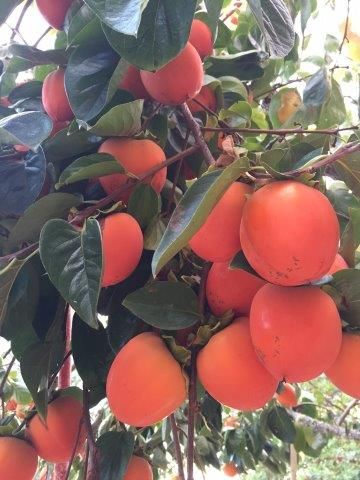
Last blog post I wrote about the gift of persimmons with a recipe for persimmon mousse and a smoothie. My daughter Lucie has a persimmon tree in her backyard and after harvesting a quantity of them, decided to preserve them by drying. Check out the beauty of this ancient food preservation technique… and art form! These fruits are peeled and then hung by their stems and massaged every few days as they dry, which takes about two months. This is a labor of dedication and love.
When Lucie sent me the photos of her finished product, I was astounded at the beauty of this technique and the resulting Zen-like dried persimmons. Truly, this is an example of food as art. Moreover, I was especially curious as to how they tasted. So after she and her partner Matt had sampled them she reported back that “The hoshigaki are quite good–rich and chewy, reminiscent of Turkish Delight!
When she offered to share some of the precious hoshigaki with me, I was delighted and told her that really, I needed only one and that I would share it with the other family members by slicing it into thin pieces and certainly savor every morsel. So today, I received a small priority mail box which contained not one… there were four, perfectly dried persimmons wrapped carefully in bubble wrap with their stems still intact! Although I wanted to eat one immediately, I knew that I should wait until after supper. For me, part of savoring, is the anticipation of something new and delightful to smell and taste–and I love making a ceremony of preparing food for tasting.
After supper was over and the kitchen was cleaned up, I decided to taste the hoshigaki alone… that is by myself. That way, I could concentrate on really tasting them. So I carefully unwrapped them and placed them on a bamboo cutting board so that I could take a few photos before eating them. I would estimate that the four dried fruits weighed about 3/4 to nearly a pound; they were heavy and dense. I was sort of surprised that they did not have much aroma. They had a faint fruity smell like that of a dried apricot or fig, however it was very mild.
After admiring them, I selected one of the hoshigaki to cut and used a sharp knife and sliced about half of it, crosswise, into 1/4-inch slices. I inhaled the fragrance of the cut fruit and it did have more aroma than the whole fruit, though not a lot.
Being a flavor fanatic, I often taste foods with my eyes closed. It enhances my sensory experience and I think it helps one to focus more on the senses of smell and taste. I am waxing poetic; I tuned in to my olfactory and taste buds and described my experience in great detail here… so be prepared…
First, biting into the slice of dried persimmon, the textural feeling was like that of a gumdrop, firm and a bit rubbery, definitely chewy. The hoshigaki is softer on the inside than on the outside, so the inner fruit softens in the warmth and moisture of the mouth and the outer skin stays a bit chewy. Thoughts of dried apricot, dried peaches and dates flooded my taste memory, definitely fruity… though more than just that… ambrosial comes to mind.
When tasting anything, we get initial strong or distinctive flavors first, and then secondary flavors, then subtle ones and perhaps just nuances. With further samplings, I tasted maple syrup with hints of sweet, caramel… the latter brought the smell and taste of hot caramel corn from the boardwalk to mind along with the hard, red, candylike glaze on a candied apple. Caramelized sugar. Then I got a brief suggestion of apple (perhaps the candy apple?) though rather like applesauce; then sweet potato flavor, not the texture.
Besides all of these flavors, there is a lot of texture, or mouth feel going on–and not just soft and chewy. There is the slightest hint of chalkiness, which one gets from cornstarch and powdered sugar like that of the cornstarch on the outside of a marshmallow or the powdered sugar on Turkish Delight. Indeed hoshigaki is reminiscent of Turkish Delight which is a confection known in Greece called loukoumi and is made from fruit, flower essences and mastic (which is a botanical substance used for gelling). I actually went to a factory that made it when I was in Greece. They made a firm, fruit jelly flavored with rose or orange flower waters, to which they sometimes add nuts, and then it firms up and is cut into square or diamond shapes, which are then dredged in powdered sugar–thus the similarity.
There is another mouthfeel, that is just barely there, and that is a slight astringency of tea leaves (Camellia sinensis). Fresh persimmons have this too–and if they are not ripe–it can be overwhelming. This is not an objectionable observation; I like tea. The suggestion of tea made me think about the floral nuances and after some more tasting and thinking, I perceived a taste of how honeysuckle smells.
Hoshigaki has the inimitable flavor of ripe persimmon, concentrated. It is magic in the mouth. An ethereal, somewhat rare, and rather pampered delicacy. Thank you Lucie and Matt for preparing and sharing these unique and precious fruits of the earth with me.
For more info, here are two links about hoshigaki. Hoshigaki can be ordered from the second source for about $44 a pound (with 6 to 10 fruits per pound) and fresh persimmons can also be ordered in season.
https://www.rootsimple.com/2012/11/how-to-make-hoshigaki-dried-persimmons/
https://www.otoworchard.com/hoshigaki.html
Fine Gardening Recommended Products

Razor-Back Potato/Refuse Hook
Fine Gardening receives a commission for items purchased through links on this site, including Amazon Associates and other affiliate advertising programs.

Hasegawa Tripod Ladder
Fine Gardening receives a commission for items purchased through links on this site, including Amazon Associates and other affiliate advertising programs.

Chapin International 10509 Upside-Down Trigger Sprayer
Fine Gardening receives a commission for items purchased through links on this site, including Amazon Associates and other affiliate advertising programs.




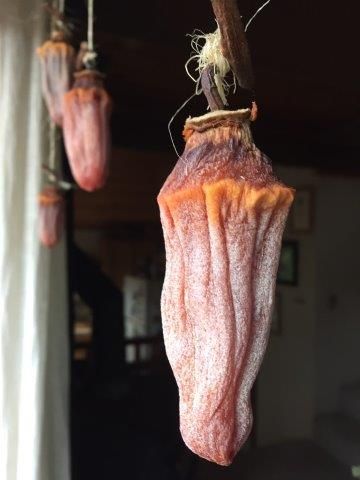

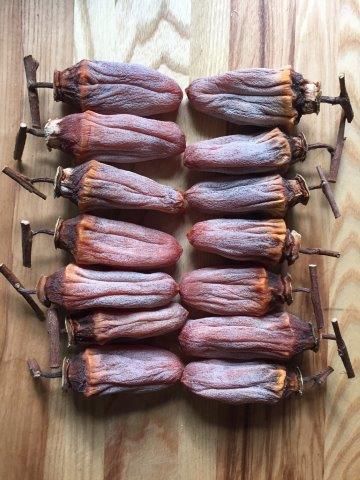

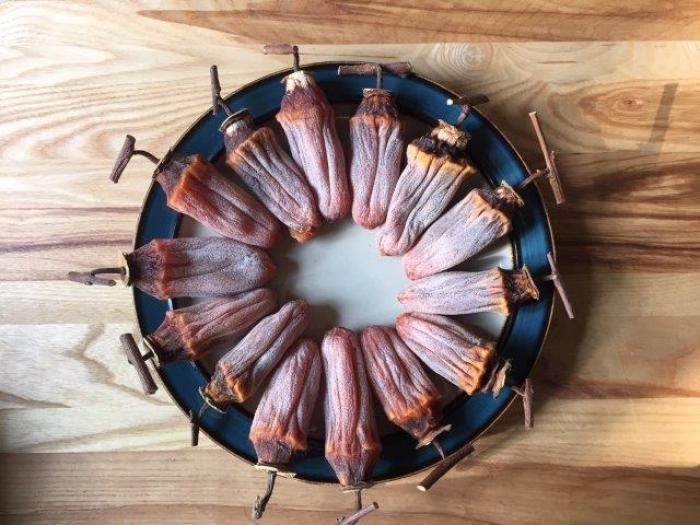
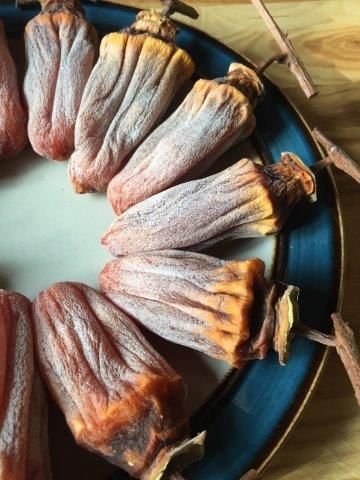
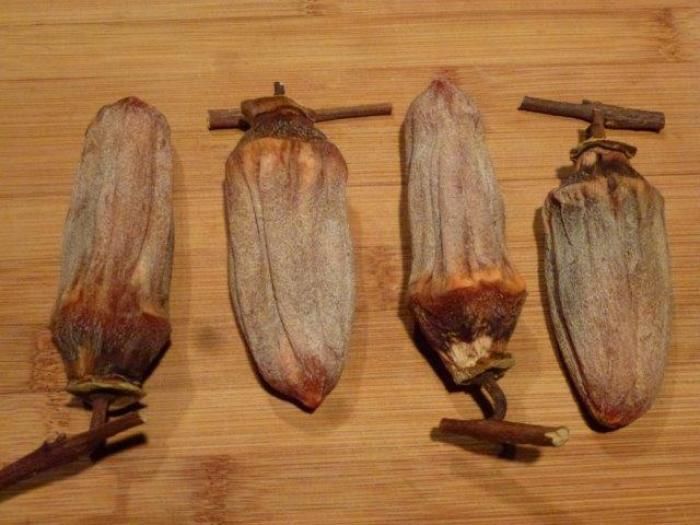
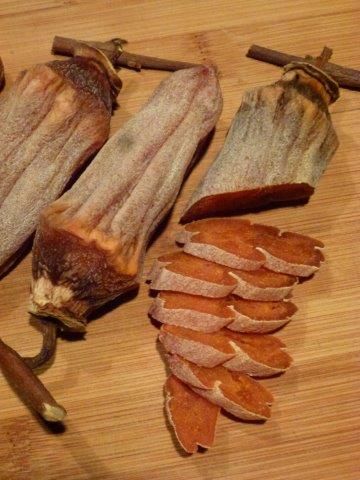
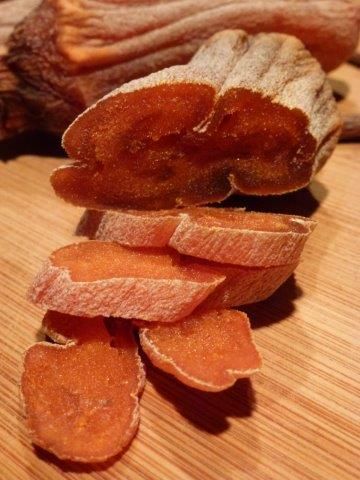

















Comments
Log in or create an account to post a comment.
Sign up Log in